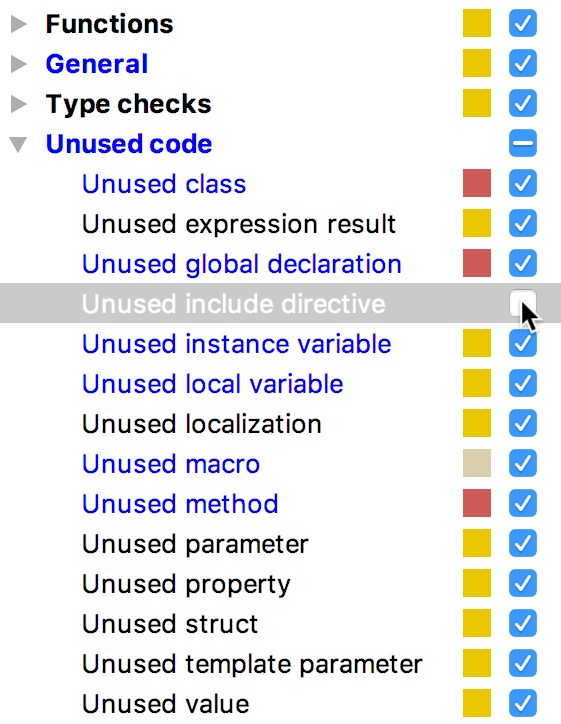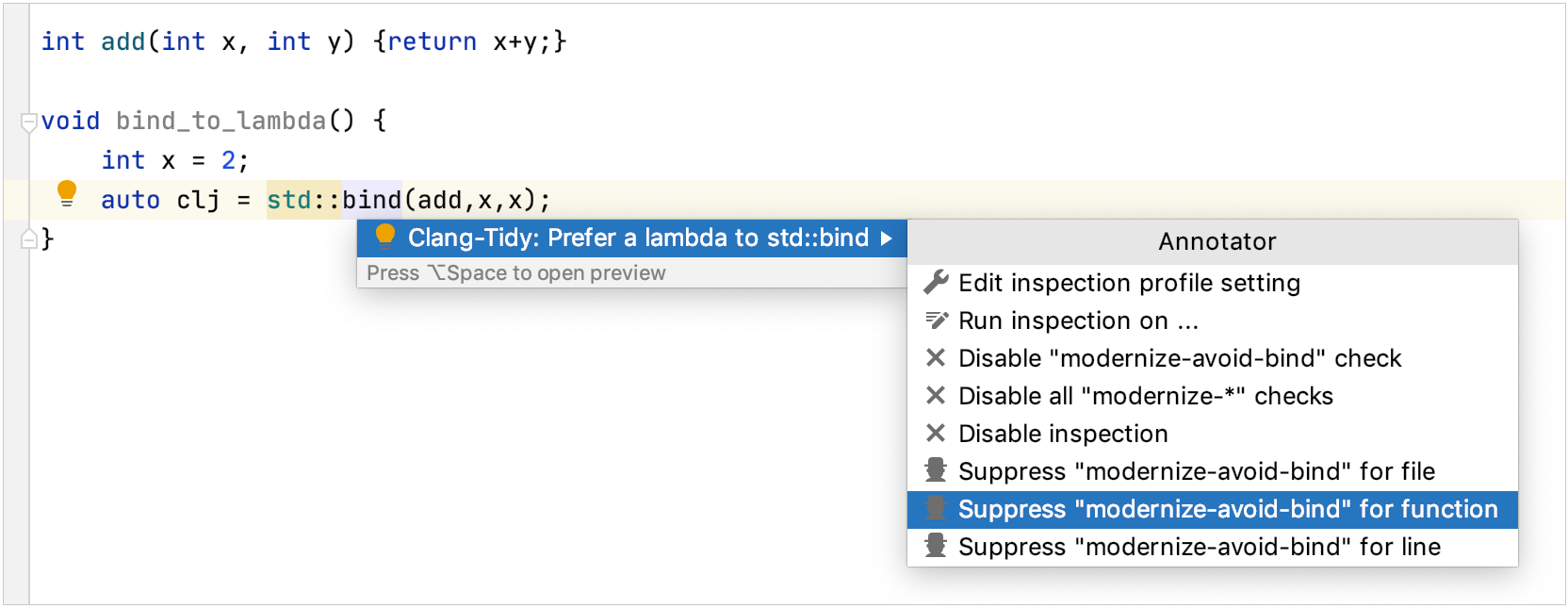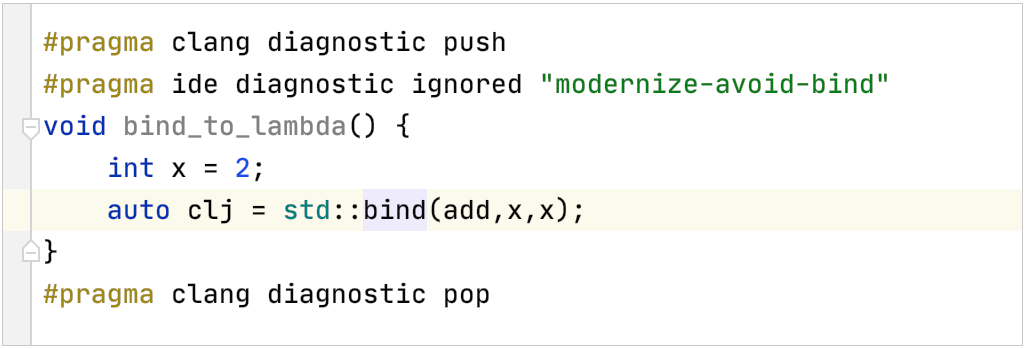Disabling and Enabling Inspections
Some inspections may report problems that you currently do not want to see. In this case, you can disable or suppress them.
When you disable an inspection, you turn it off. It means that the code analysis engine stops searching project files for the problem that this inspection is designed to detect. Note that when you disable an inspection, you disable it in the current inspection profile; it remains enabled in other profiles.
Disable inspections
Disable an inspection in the settings
In the Settings/Preferences dialog Ctrl+Alt+S, select .
Locate the inspection you want to disable, and clear the checkbox next to it.

Apply the changes and close the dialog.
Disable an inspection in the editor
Place the caret at the highlighted string and press Alt+Enter (or click
 to use the intention action).
to use the intention action).Click
 next to the inspection you want to disable, and select Disable inspection.
next to the inspection you want to disable, and select Disable inspection. 
Disable an inspection in the Results tool window
In the Inspection Results tool window (after running code analysis), right-click the inspection you want to disable and select Disable inspection.
Click
 to hide the disabled inspection alerts.
to hide the disabled inspection alerts.
Suppress inspections
When you suppress an inspection, the code analysis engine doesn't highlight the problem found by this inspection in the specific piece of code (file, statement, function, or line).
Suppress an inspection in the editor
Place the caret at the highlighted string and press Alt+Enter (or click
 to use the intention action).
to use the intention action).Click
 next to the inspection you want to suppress, and select the necessary suppress action.
next to the inspection you want to suppress, and select the necessary suppress action. 
You can also suppress inspections from the Results tool window.
For C/C++ code, CLion uses the #pragma clang diagnostic to suppress inspections. For example, when you suppress one of the Clang-Tidy inspections, modernize-avoid-bind, for a selected function, the following code appears above and below the declaration: 
Clang-Tidy inspections have the additional Suppress for line option, which adds the // NOLINT comment, forcing Clang-Tidy to ignore the current line: 
To re-enable a suppressed inspection, delete the #pragma lines or // NOLINT comments.
Change the highlighting level for a file
By default, CLion highlights all detected code problems. You can change this behavior for the file you are currently working with. Click
 in the status bar (bottom right-hand corner), and select one of these options:
in the status bar (bottom right-hand corner), and select one of these options: None: turn highlighting off.
None: turn highlighting off.  Syntax: highlight syntax problems only.
Syntax: highlight syntax problems only.  Inspections: (default) highlight syntax problems and problems found by inspections.
Inspections: (default) highlight syntax problems and problems found by inspections.
You can also change the highlighting level from the main menu. Select or press Ctrl+Alt+Shift+H.